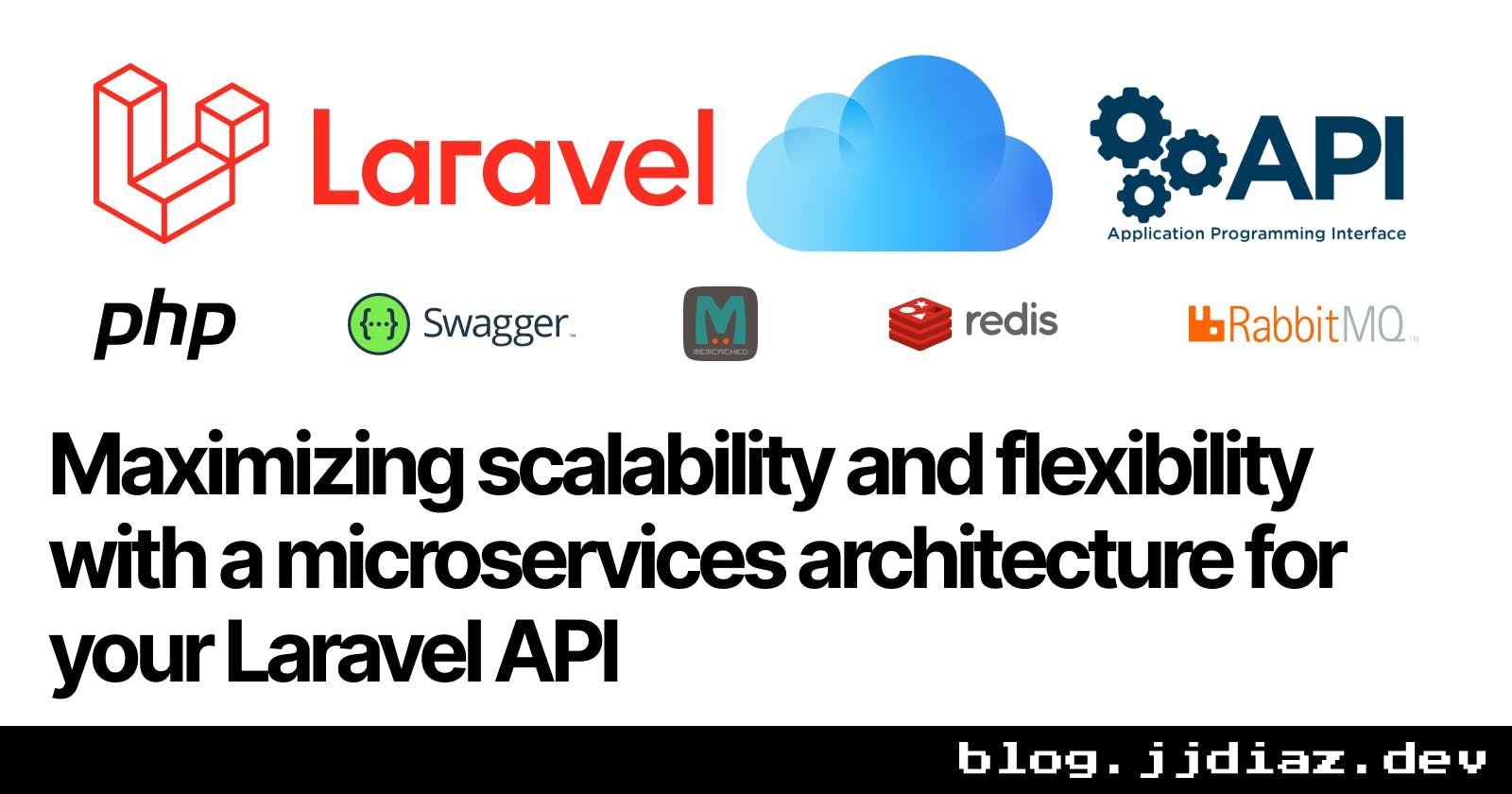Maximizing scalability and flexibility with a microservices architecture for your Laravel API
Balancing the Benefits and Challenges of using a Microservices Architecture with your Laravel API
Microservices Architecture
A microservices architecture is a way of designing and building software applications as a collection of small, independent services that can be scaled and managed separately.
This approach can offer several benefits over a monolithic architecture, including:
improved scalability
flexibility
maintainability
In a monolithic architecture, all of the components of an application are bundled together and deployed as a single unit. This can make it difficult to scale individual components or make changes to the application without affecting the entire system.
In contrast, a microservices architecture decomposes an application into smaller, independent services that can be scaled and managed separately.
Each service is responsible for a specific function or set of functions and communicates with other services through well-defined interfaces.
This allows each service to be developed, tested, and deployed independently, making it easier to scale and modify individual components without affecting the entire system.
Benefits to using a microservices architecture with your Laravel API
One of the main benefits is improved scalability. Because each service can be scaled independently, you can scale specific components of your API as needed to handle increased traffic or workload. This can help improve the performance of your API and ensure that it can handle a large number of requests.
Another benefit of microservices is improved flexibility. Because each service is independent, you can modify or replace individual components without affecting the entire system. This can make it easier to make changes to your API and respond to changing business needs.
Finally, microservices can also improve maintainability by making it easier to understand and work with the codebase. Because each service has a specific function and communicates with other services through well-defined interfaces, it's easier to understand how the system works and identify and fix issues.
Implementing a Microservices Architecture
To use a microservices architecture with your Laravel API, you'll need to design and build your API as a collection of small, independent services that communicate with each other through well-defined interfaces. This might involve breaking down your API into smaller, more focused services that each handle a specific function or set of functions.
For example, you might have:
one service responsible for handling user authentication
another service responsible for managing products
and another service responsible for processing orders
Each of these services would be developed, tested, and deployed independently, and would communicate with each other through well-defined interfaces.
To set up a microservices architecture with your Laravel API, you'll need to consider several factors, including:
how to design and build your services
how to deploy and manage them
and how to ensure that they can communicate with each other effectively
Here's an example of how you might structure your Laravel API using a microservices architecture:
- API Gateway
- User Authentication Service
- Product Management Service
- Order Processing Service
In this example, the API Gateway serves as the entry point for all incoming requests and routes them to the appropriate service. The User Authentication Service handles all user authentication tasks, the Product Management Service handles all tasks related to managing products, and the Order Processing Service handles all tasks related to processing orders.
By considering these and other factors, you can determine whether a microservices architecture is the right choice for your Laravel API and how to set it up to maximize the benefits of this approach.
It's important to note that a microservices architecture is not the right choice for every application or API.
This approach can be more complex and require more resources to set up and manage than a monolithic architecture. It may also require more coordination between teams and more frequent deployments.
Before deciding to use a microservices architecture with your Laravel API, it's important to carefully consider the benefits and trade-offs of this approach. Some factors to consider include the size and complexity of your API, the resources and expertise available to your team, and the goals and needs of your business.
Communication between services
If you do decide to use a microservices architecture with your Laravel API, there are several best practices you should follow to ensure that it is implemented effectively.
One important best practice is to use a consistent and well-defined interface for communication between services. This might involve using a common API specification or protocol, such as REST or GraphQL, to ensure that services can communicate with each other in a consistent and predictable way.
Another important best practice is to use a service registry to keep track of the location and status of each service. This might involve using a tool like Consul or Eureka to manage service discovery and routing.
Finally, it's important to carefully consider the design and structure of your services to ensure that they are modular and easy to maintain. This might involve using a domain-driven design approach to organize your code and create clear boundaries between services.
By following these and other best practices, you can ensure that your microservices architecture is implemented effectively and delivers the desired benefits for your Laravel API.
Enjoy coding!

